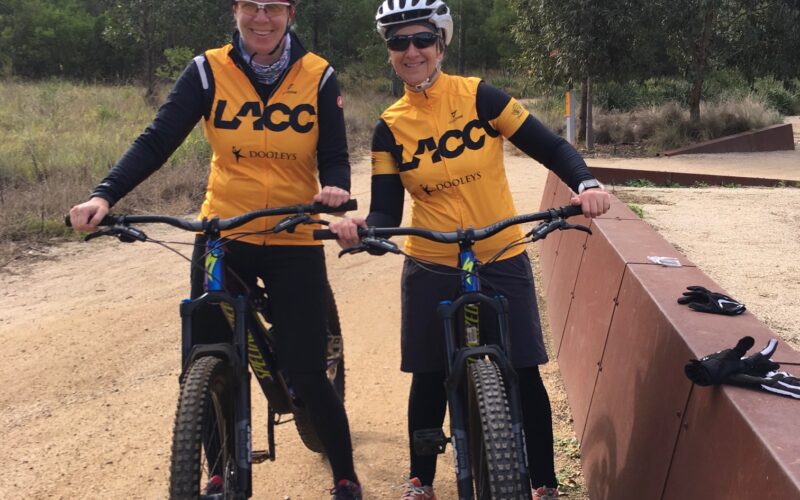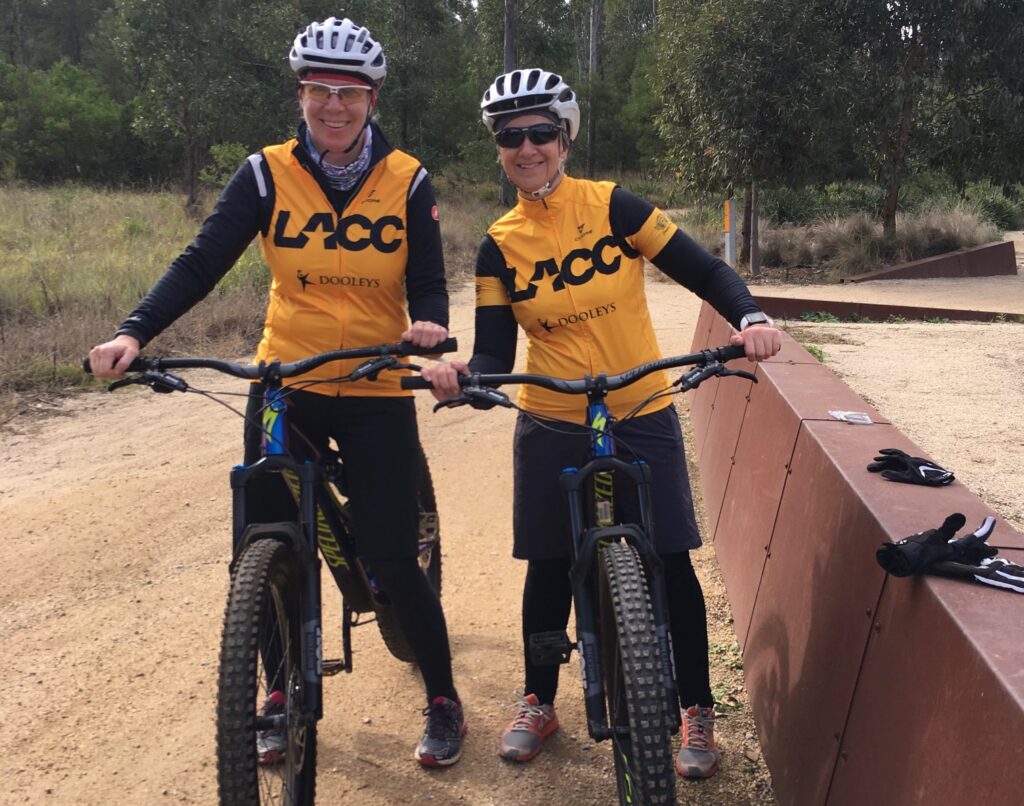Listen up…..basic tips for beginner mountain biking
For anyone who reads this blog regularly, you’ll know that I’m a devoted road rider, but I also see merit in other types of riding so here are some very basic tips for beginner mountain biking.
I’ve been lucky enough to ride some amazing mountain bikes, courtesy of Specialized at various industry events. My favourite was a dual suspension women’s mountain bike that had tyres that were 2.8 inches wide. It was like cruising on air and felt so stable.
I was also lucky enough to ride with some very experienced mountain bikers, who worked for Specialized and Specialized dealers. They provided great instruction on how to ride these awesome machines, and how to trust the bike and learn what it’s capable of.
I’ve also borrowed a few ideas from US mountain bike enthusiast Selene Yeager who has some great tips in her book Every Woman’s Guide to Cycling.
Start on non-technical trails
Get the feeling for off-road riding on a local fire trail or something non-technical. When you become more comfortable you can try some rougher terrain like rocky or wooded single-track (a walking trail that is often strewn with rocks, roots and water crossings).
Find someone more experienced to ride with
Go riding with someone more experienced that you. I found that following an experienced rider through rocky and uneven sections much easier that doing it alone. I figured that if they could make it over certain obstacles then I could too. This worked every time!
Trust the bike
Trust the bike to do what it’s built to do. I was riding a high-end dual suspension bike that is made to go over major obstacles and I had to trust that it would get me where I wanted to go. I will admit that I got off a few times when the obstacles seemed too great for such a novice, but the times that I did just ‘trust the bike’ it never let me down.
Look where you want to go
You need to look where you want to go. If you fix your gaze on a large rock or tree your bike will head straight for it. You need to be able to keep an eye out for obstacles on the path but also to look well ahead. Over time you will learn to pick the best line and ride smoothly around and through obstacles.
Weight back when descending
Keep your weight back when you are going down hill. One of the most common causes of MTB riders going over the handlebars is putting your weight too far forward. Some mountain bikes are fitted with seat posts that can be dropped out of the way, which is particularly useful when descending, particularly on technical terrain.
Use the momentum
Use the momentum of the bike and resist braking too heavily. You’ll be far more stable over small rocks and roots if you’re carrying a little speed. If you crawl along (tempting when you’re a newbie) you‘ll get bumped off course by every little obstacle.
Relax
Relax your elbows and knees and make sure they are slightly bent at all times so the bike has room to move beneath you. Riding along a rocky path for the first time is likely to make you tense up (I did) but you need to make a conscious effort to avoid this.
Easy gear down hill
When you’re going up hill over rough terrain choose an easy gear and increase your cadence. This was described to me as ‘power pedal’ and it worked really well for me. It also distracted me from worrying about falling off the bike.



Great tips! Thank you. Look up where you want to go is one of my foundation strategies that I try to practice all the time. “Scan and plan!” is what my ride instructor told me. It’s still not automatic for me-especially when my mind is distracted!
I would also add that getting off your bike and taking a look at an upcoming turn or bump will help so that you know what’s coming up and your mind can prepare. Getting off the bike to look at the upcoming feature so that I know what’s on the other side helps me to plan my line or know that it’s safe for me to ride.